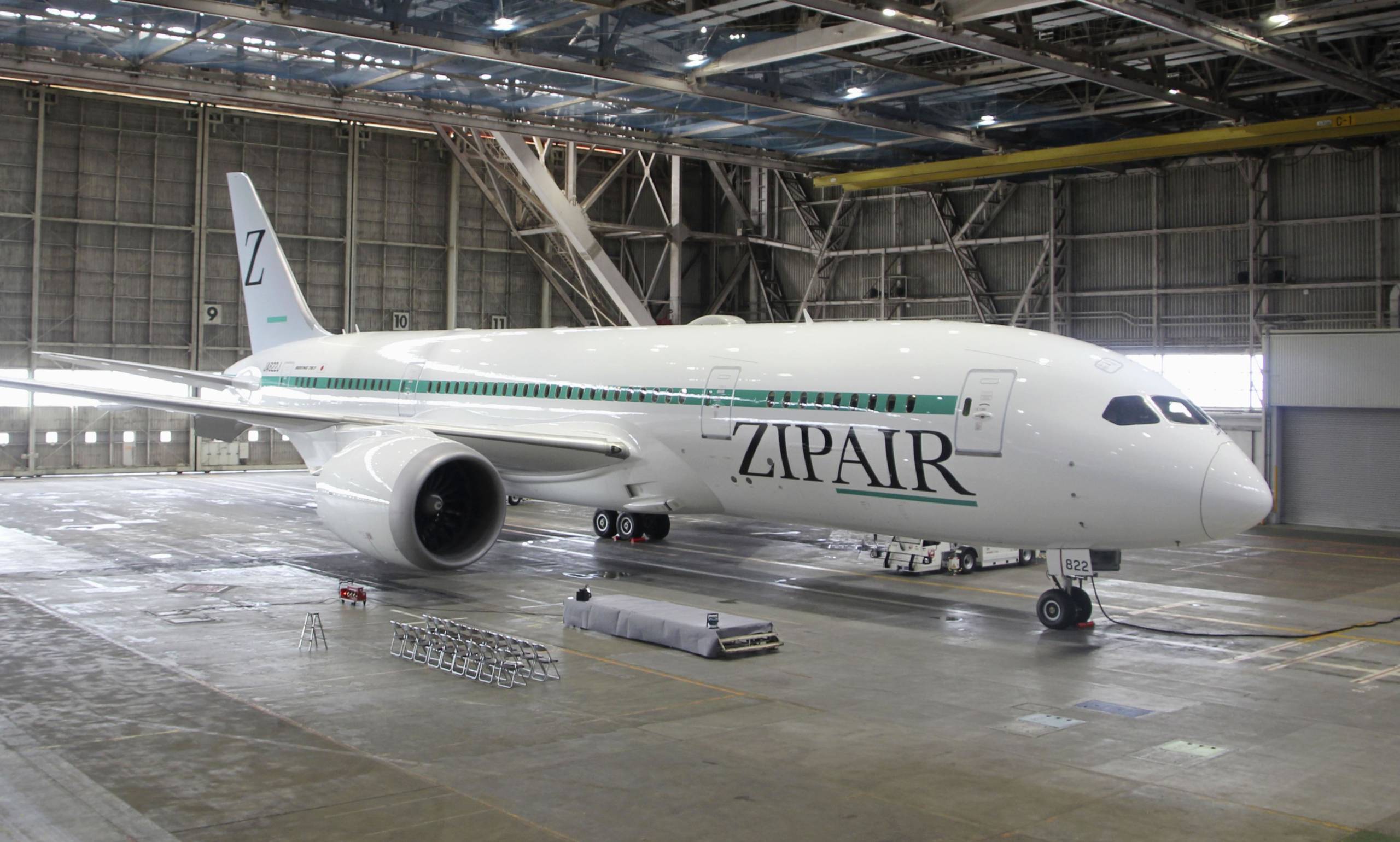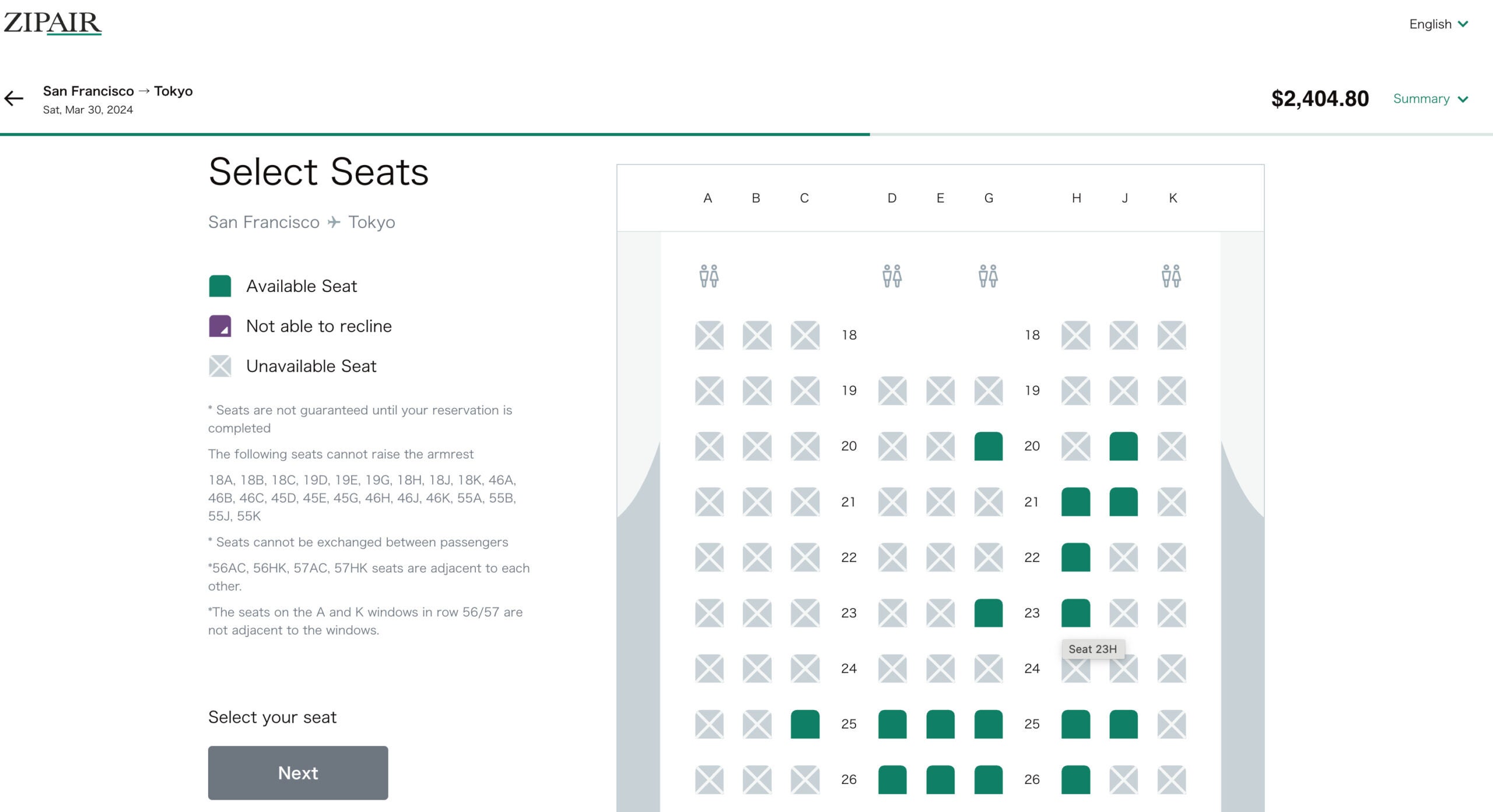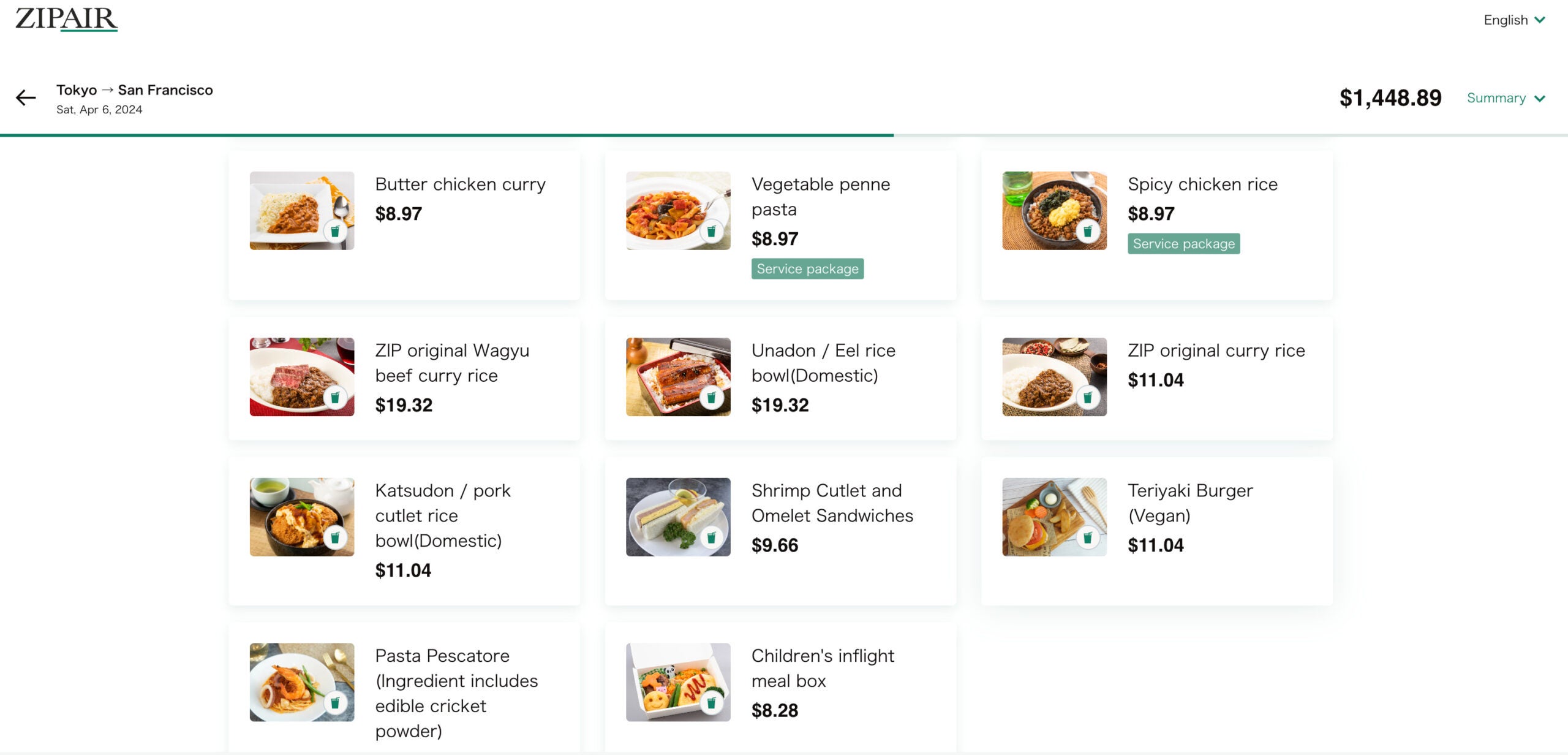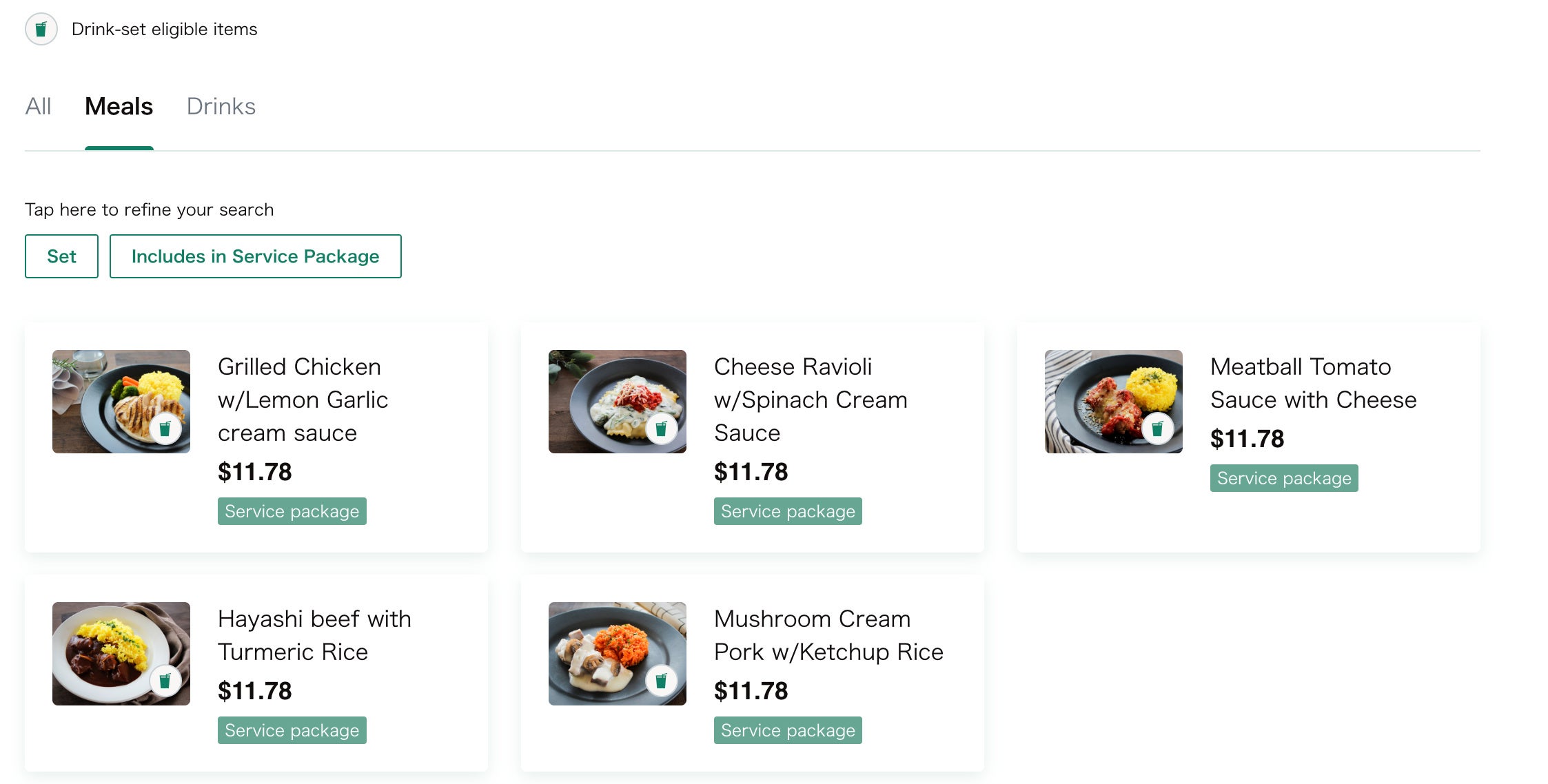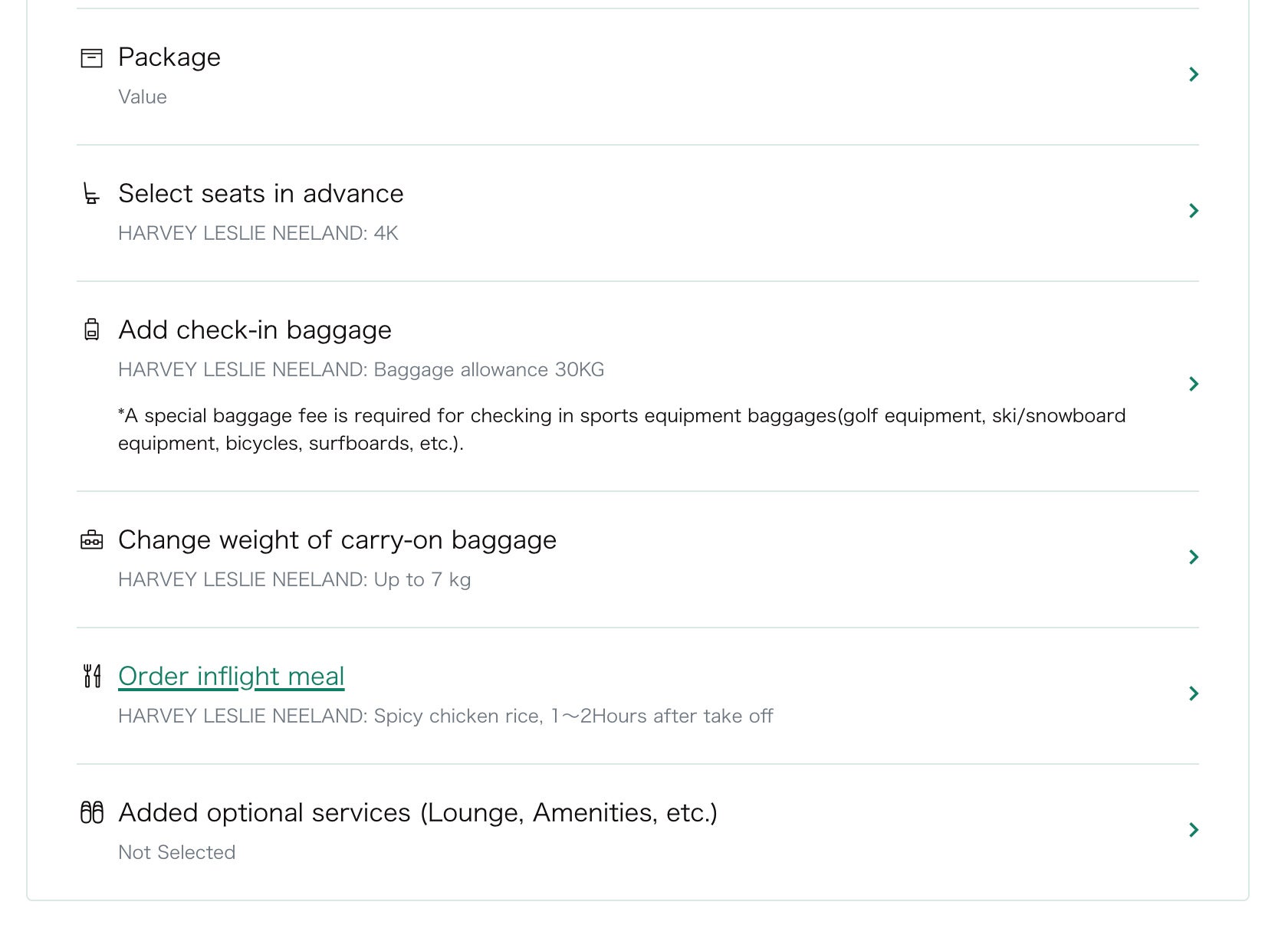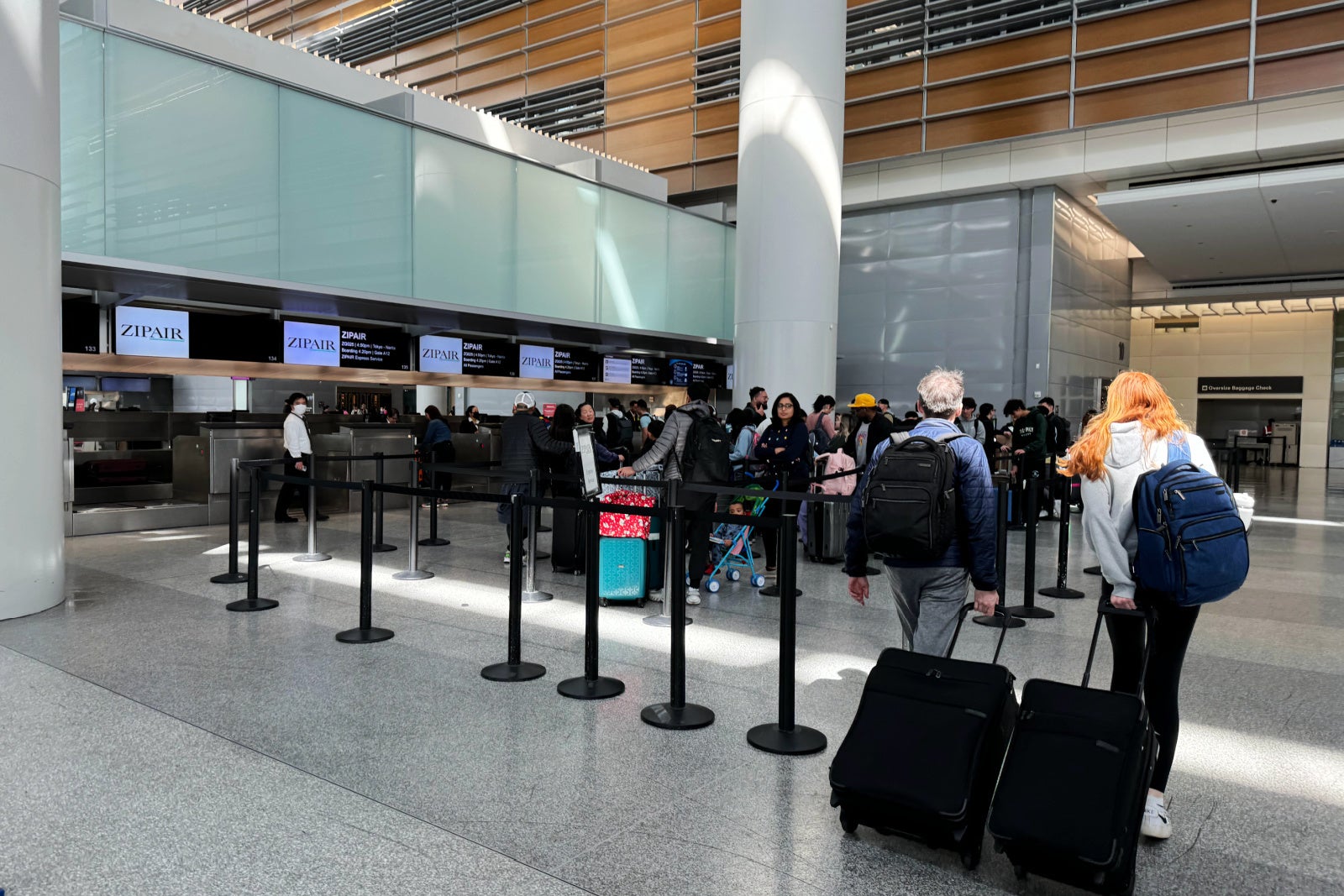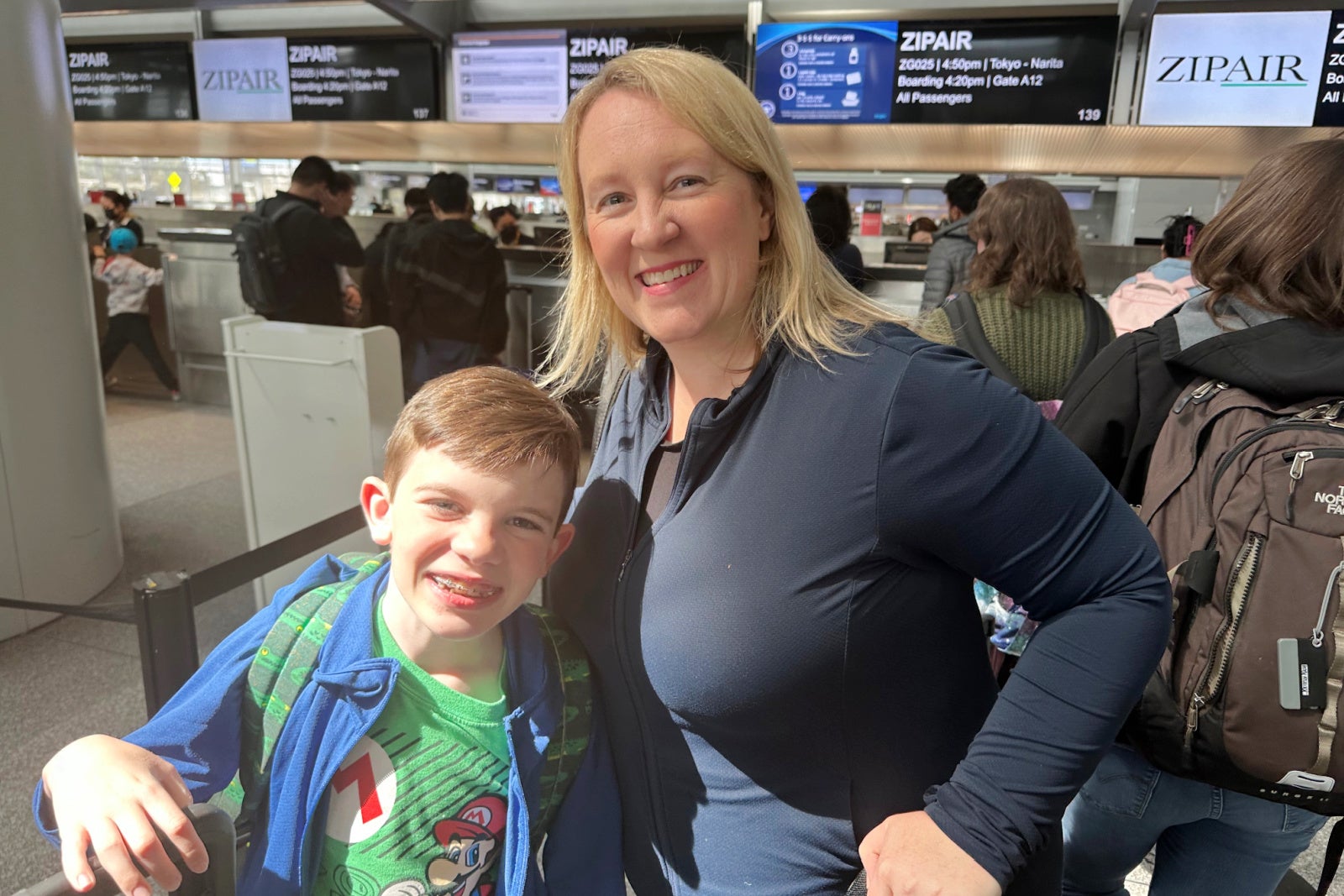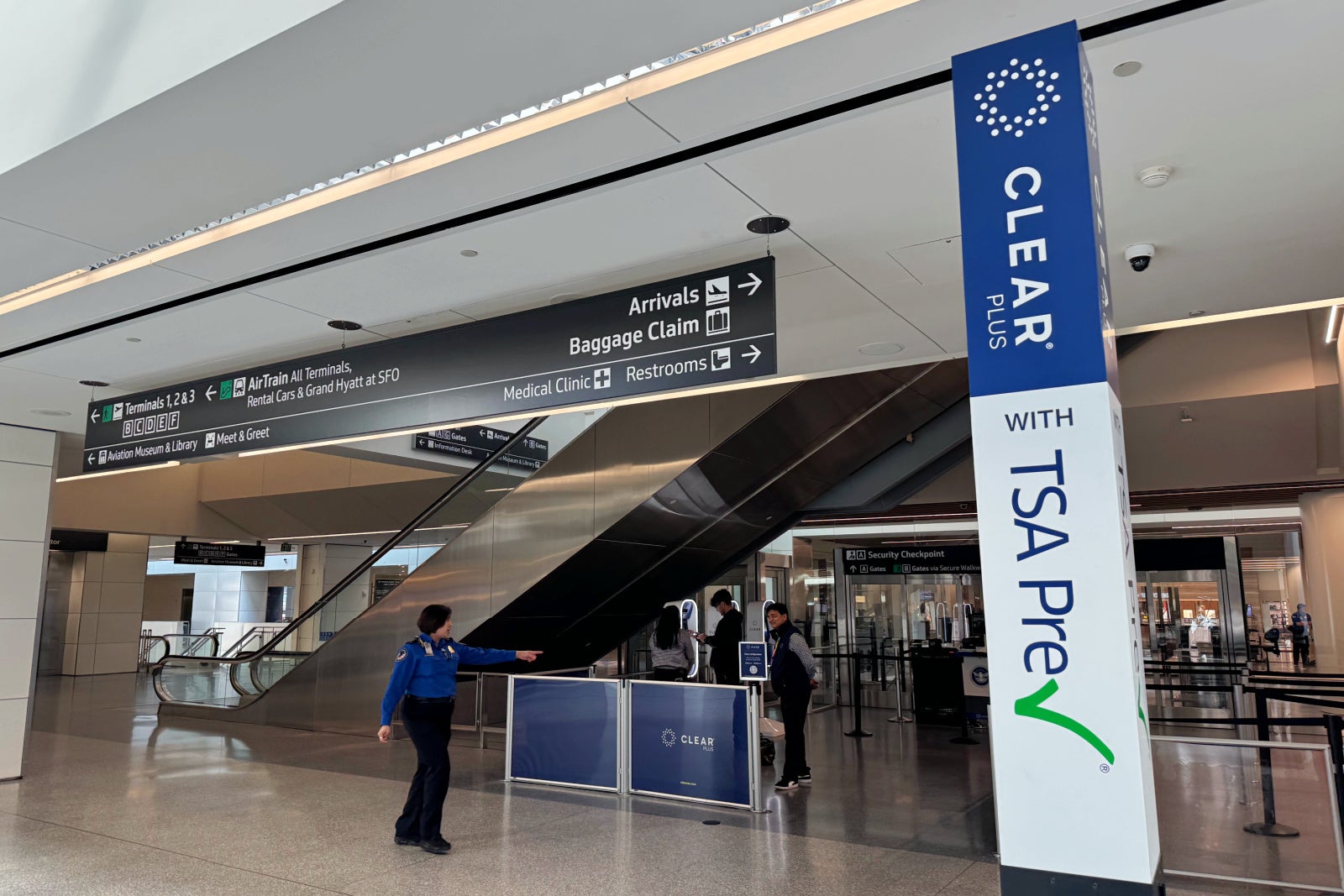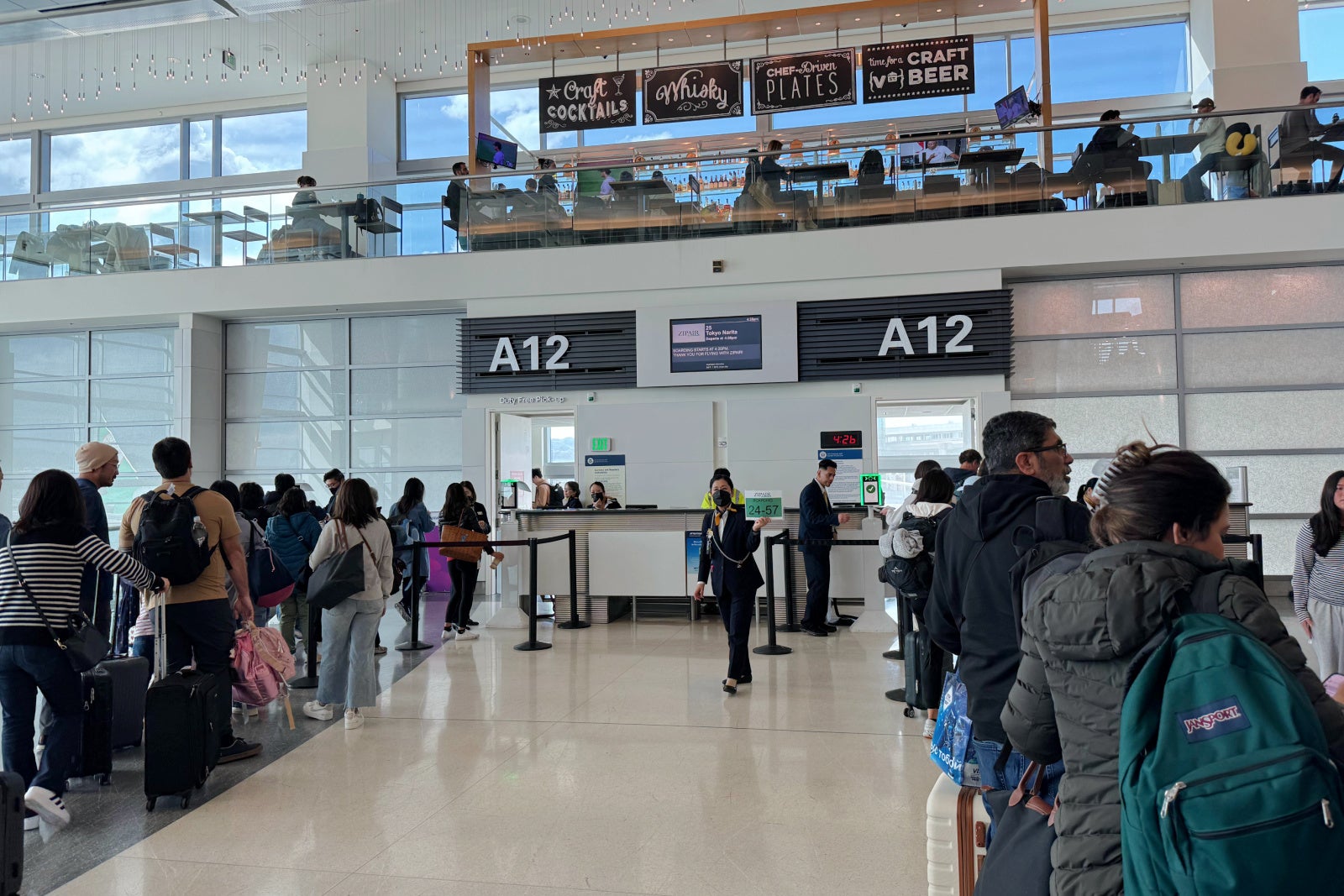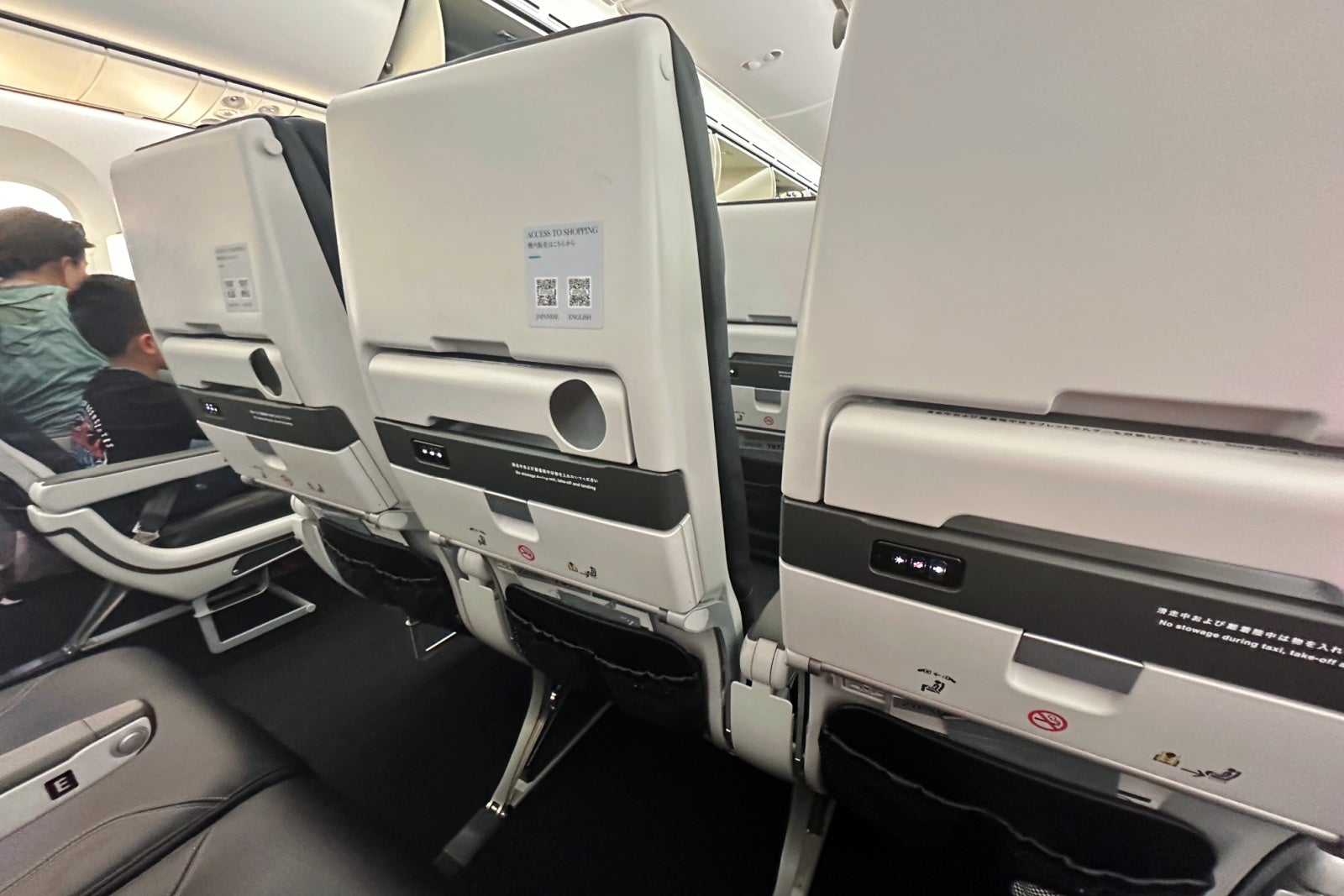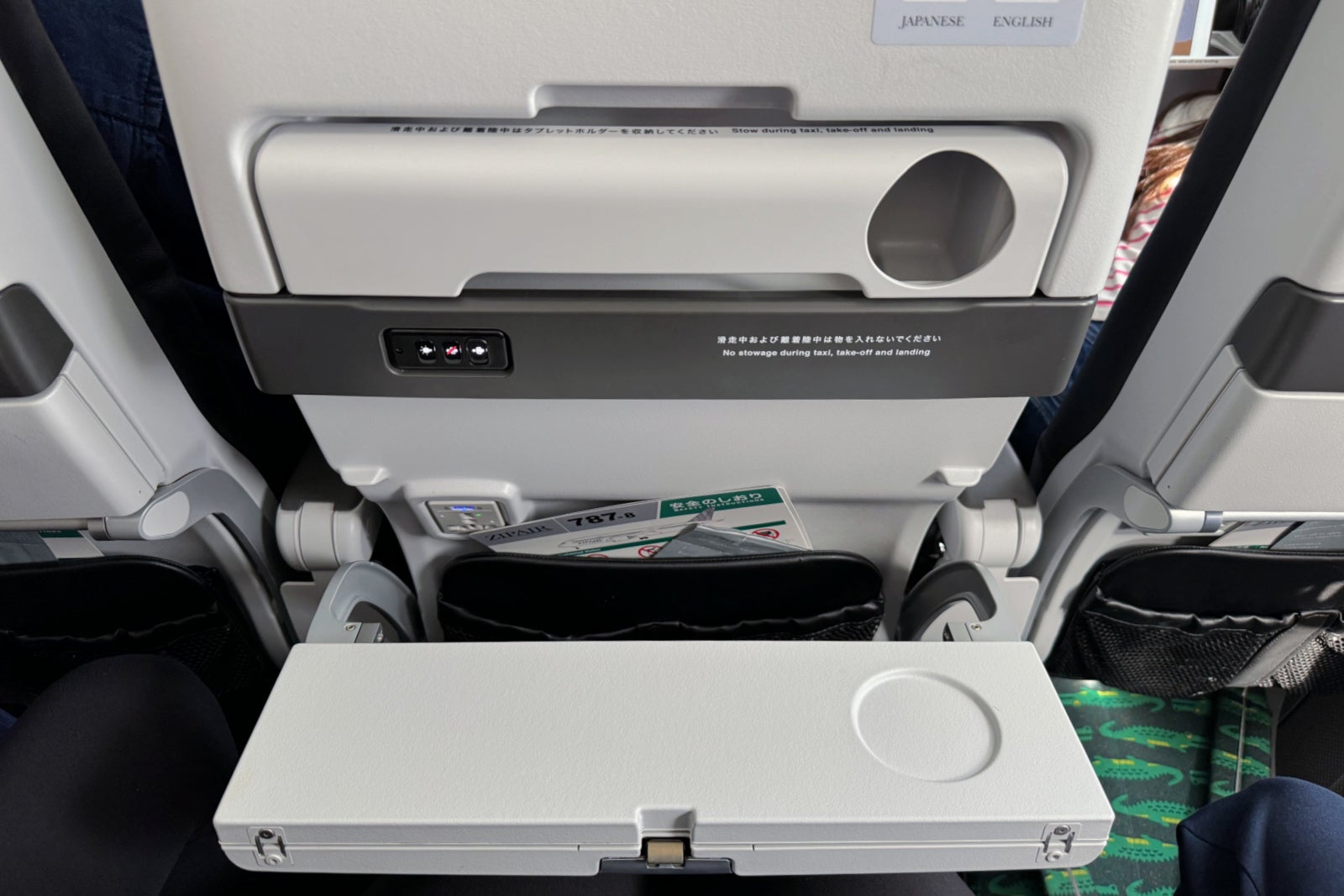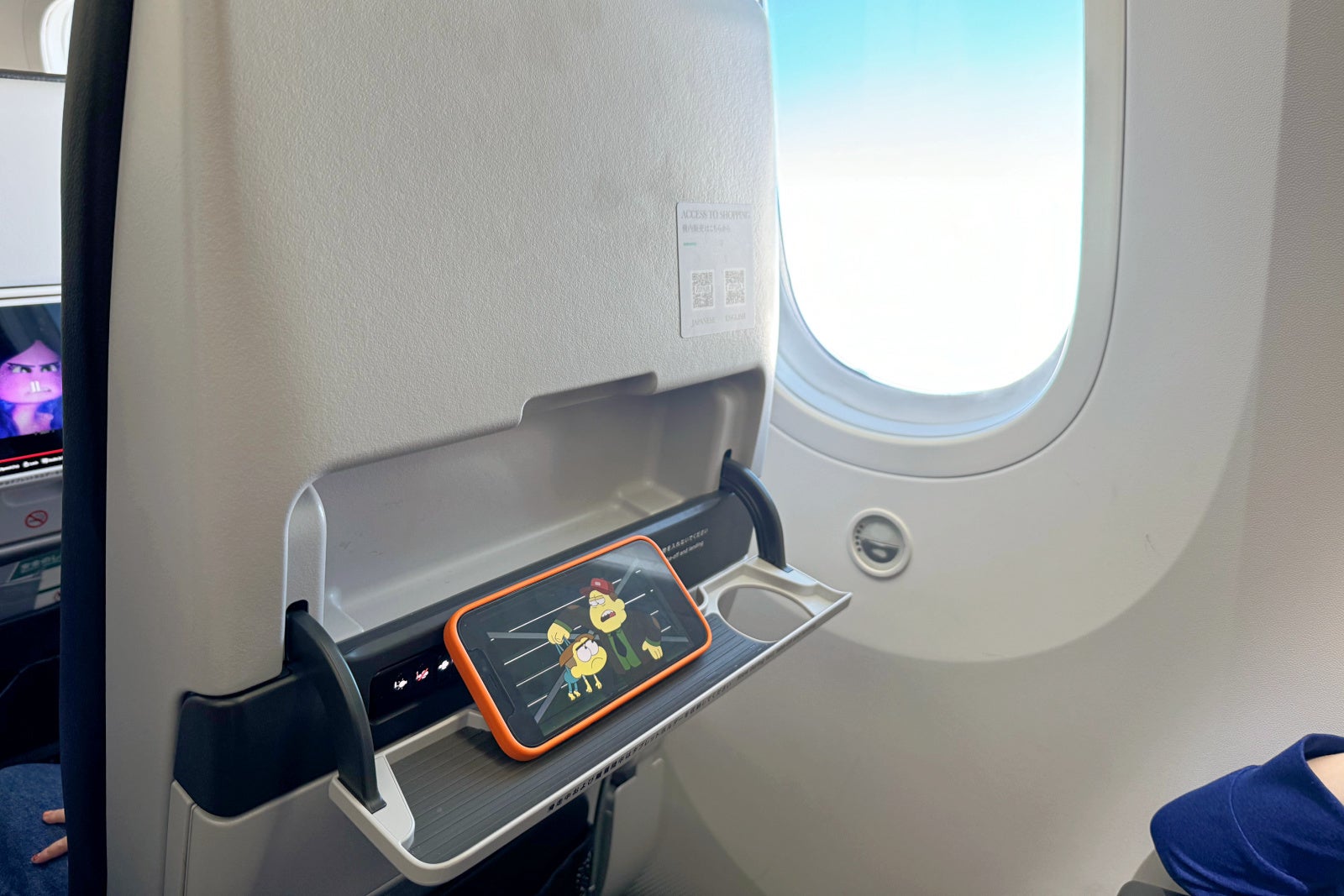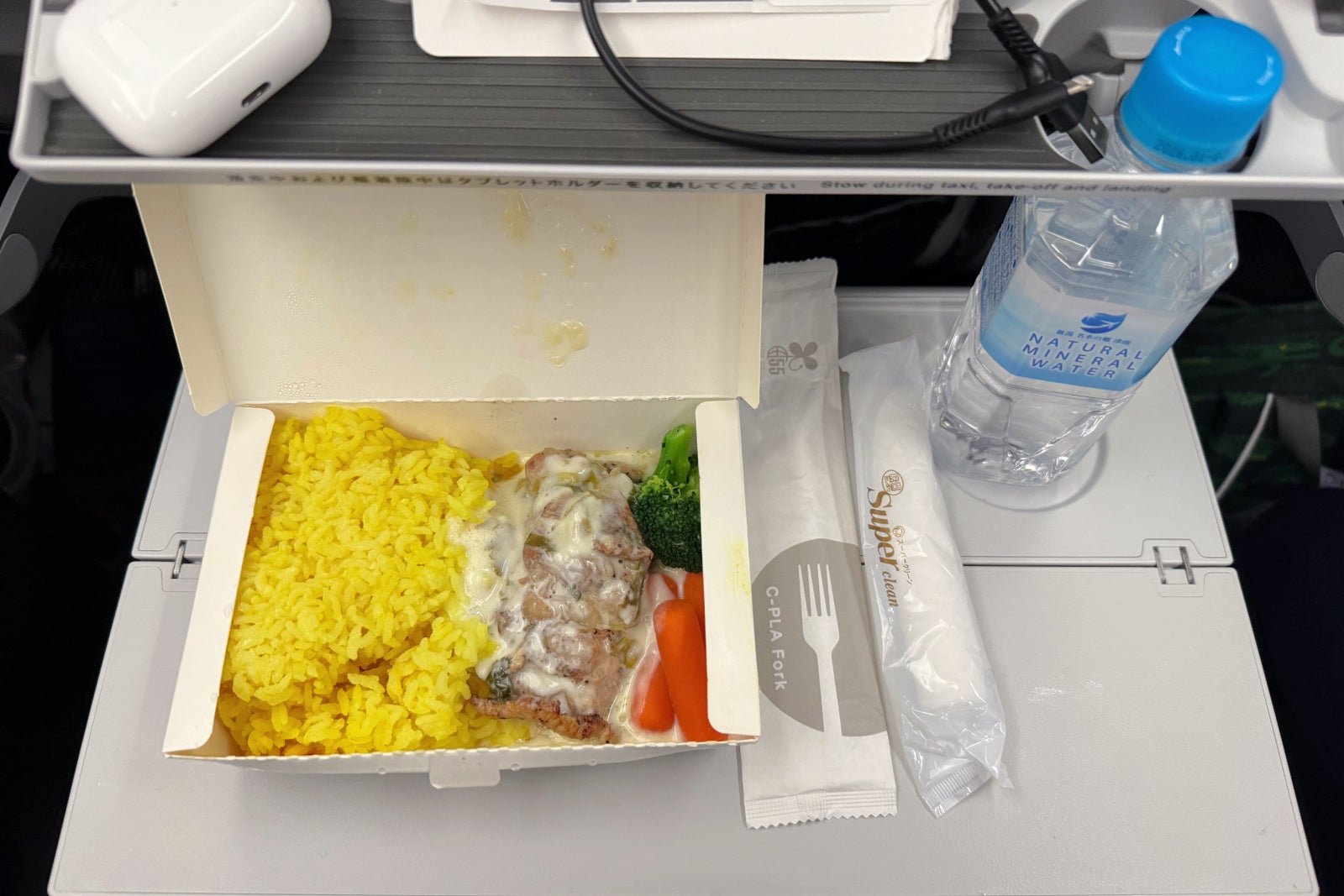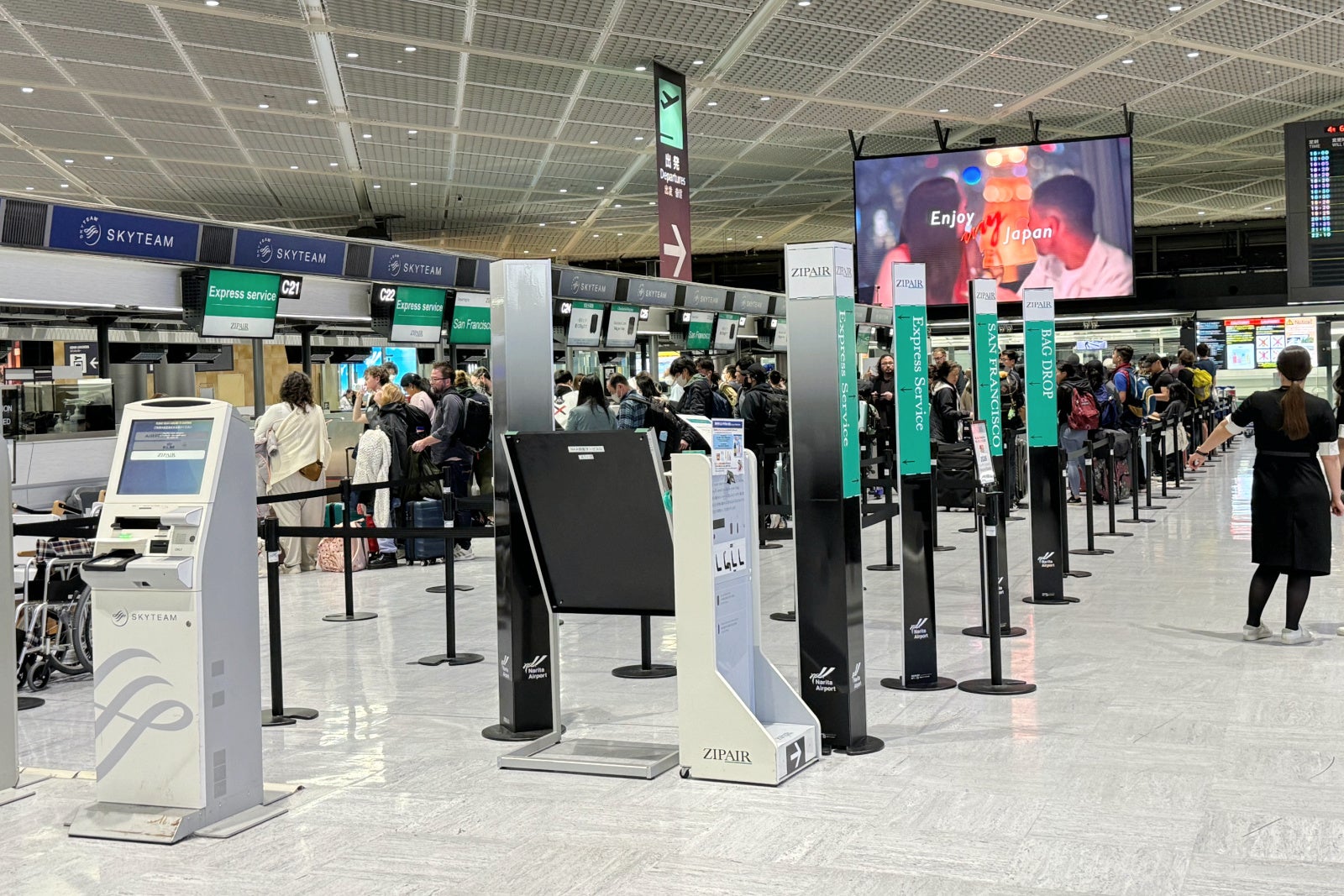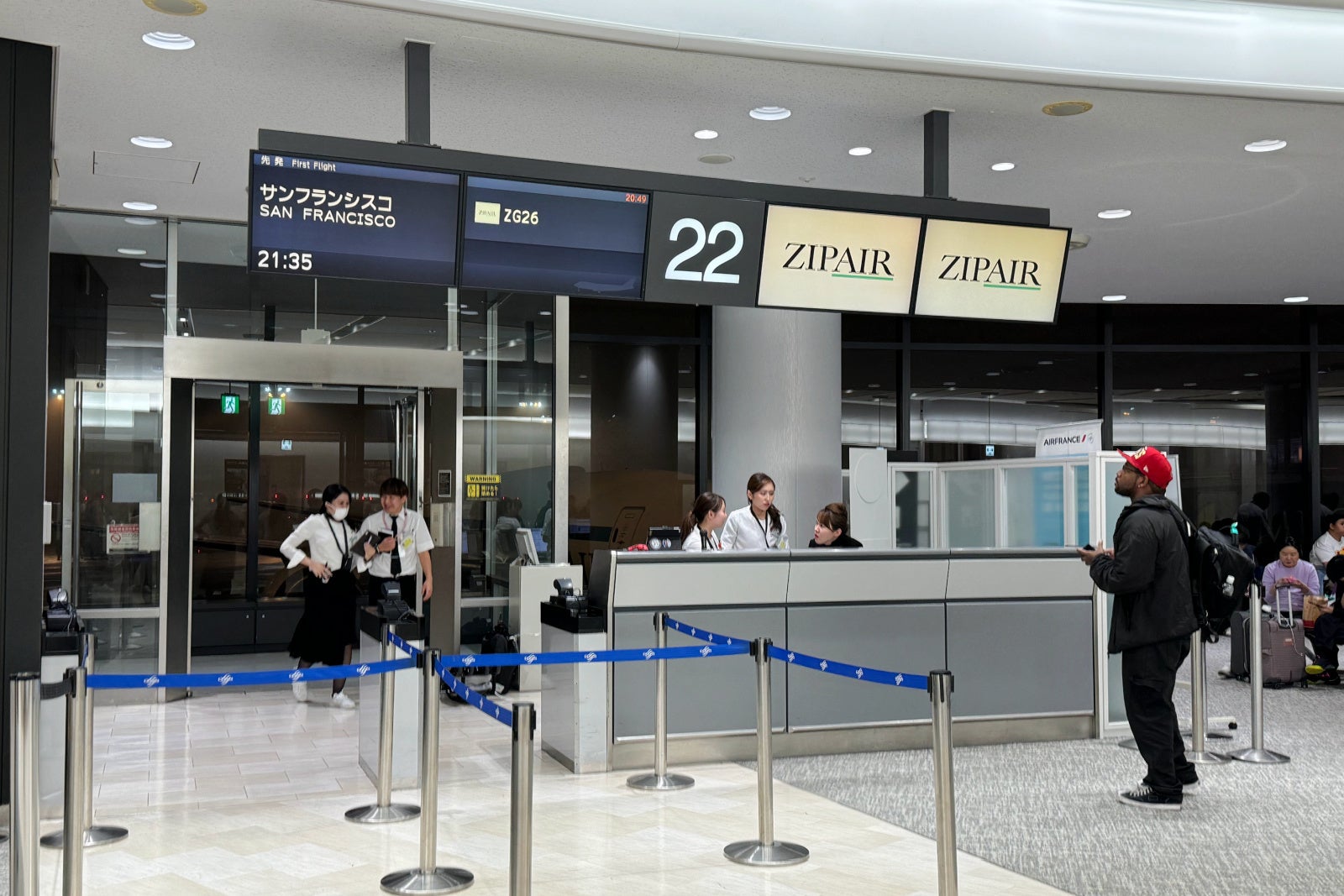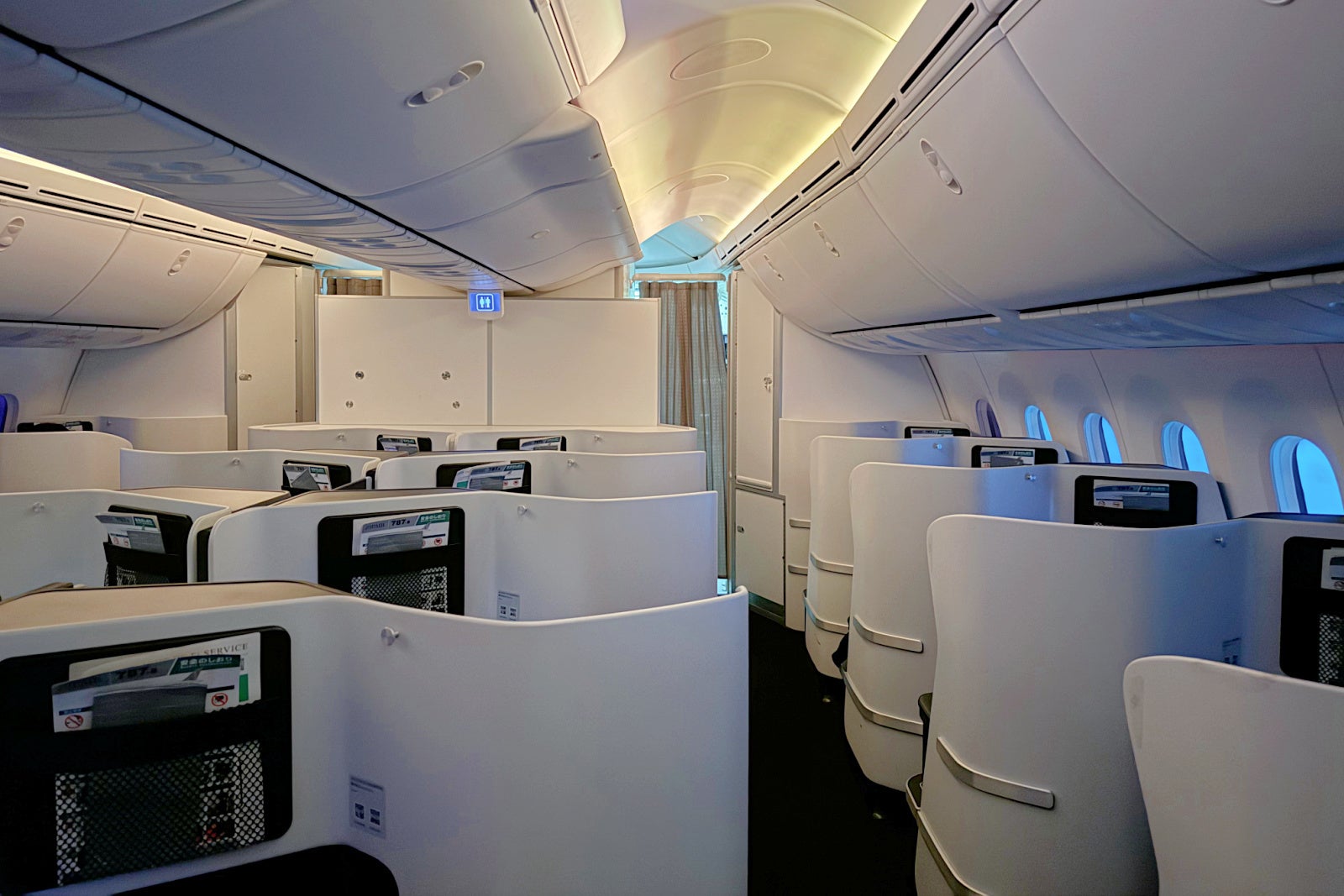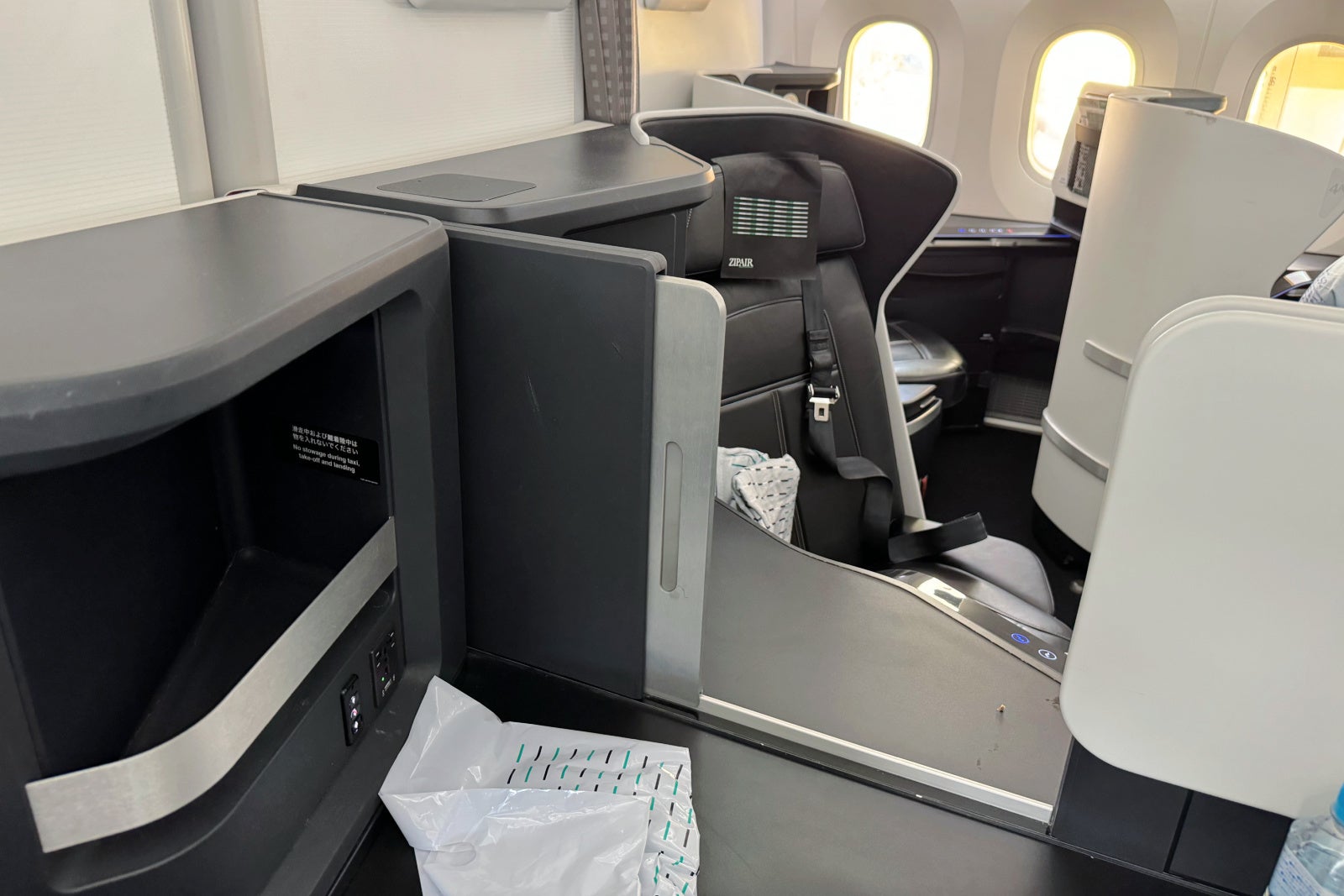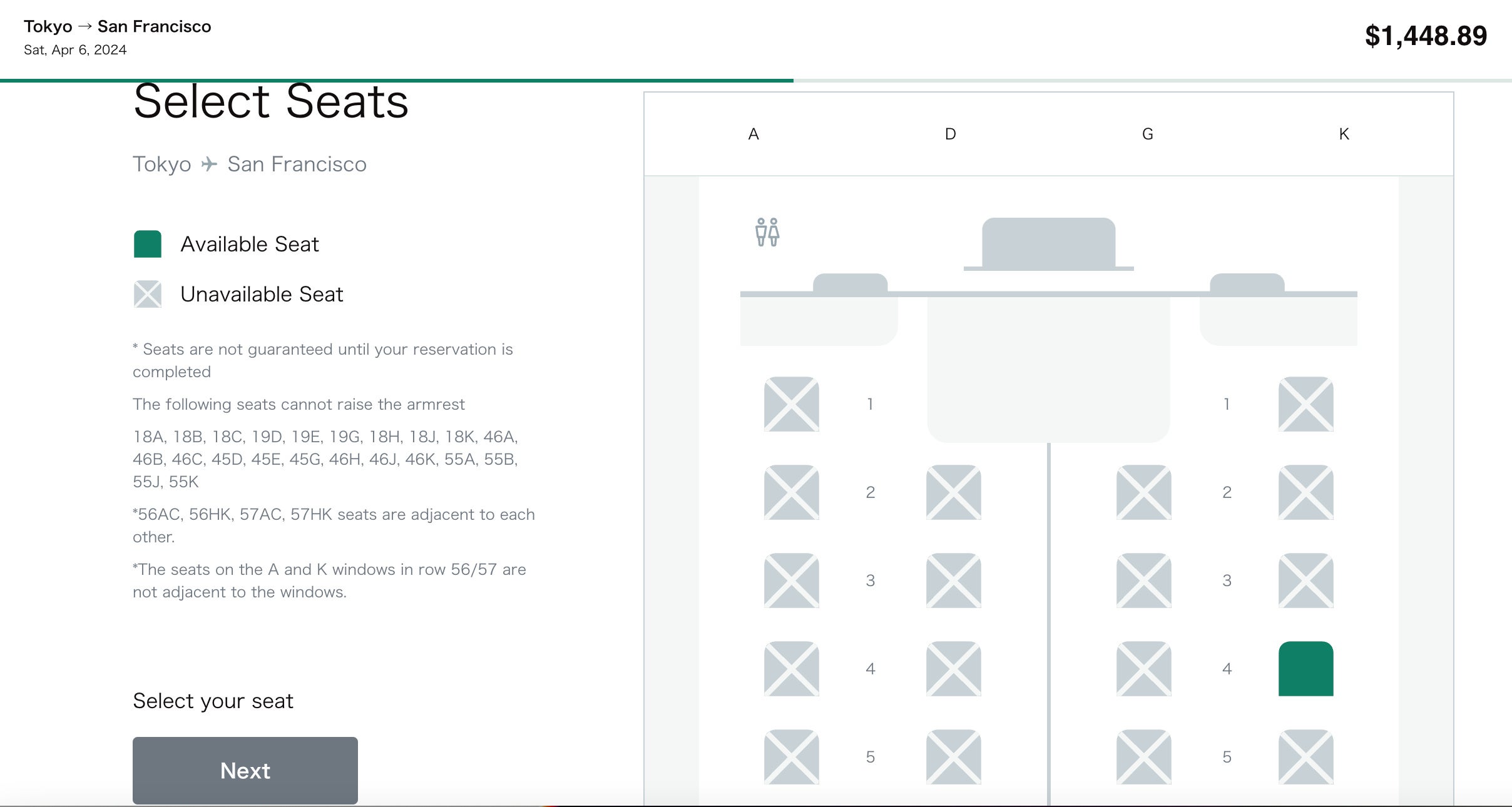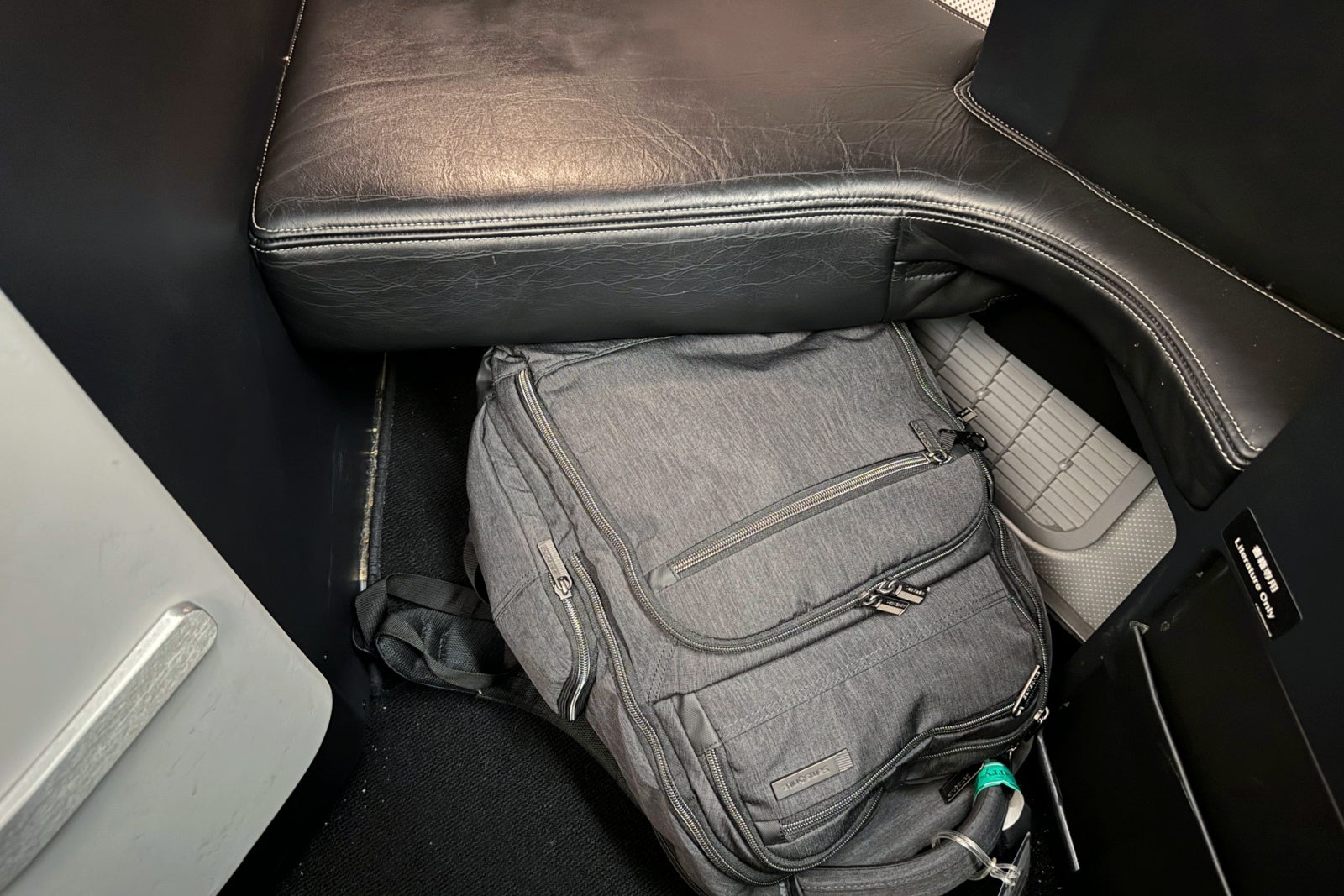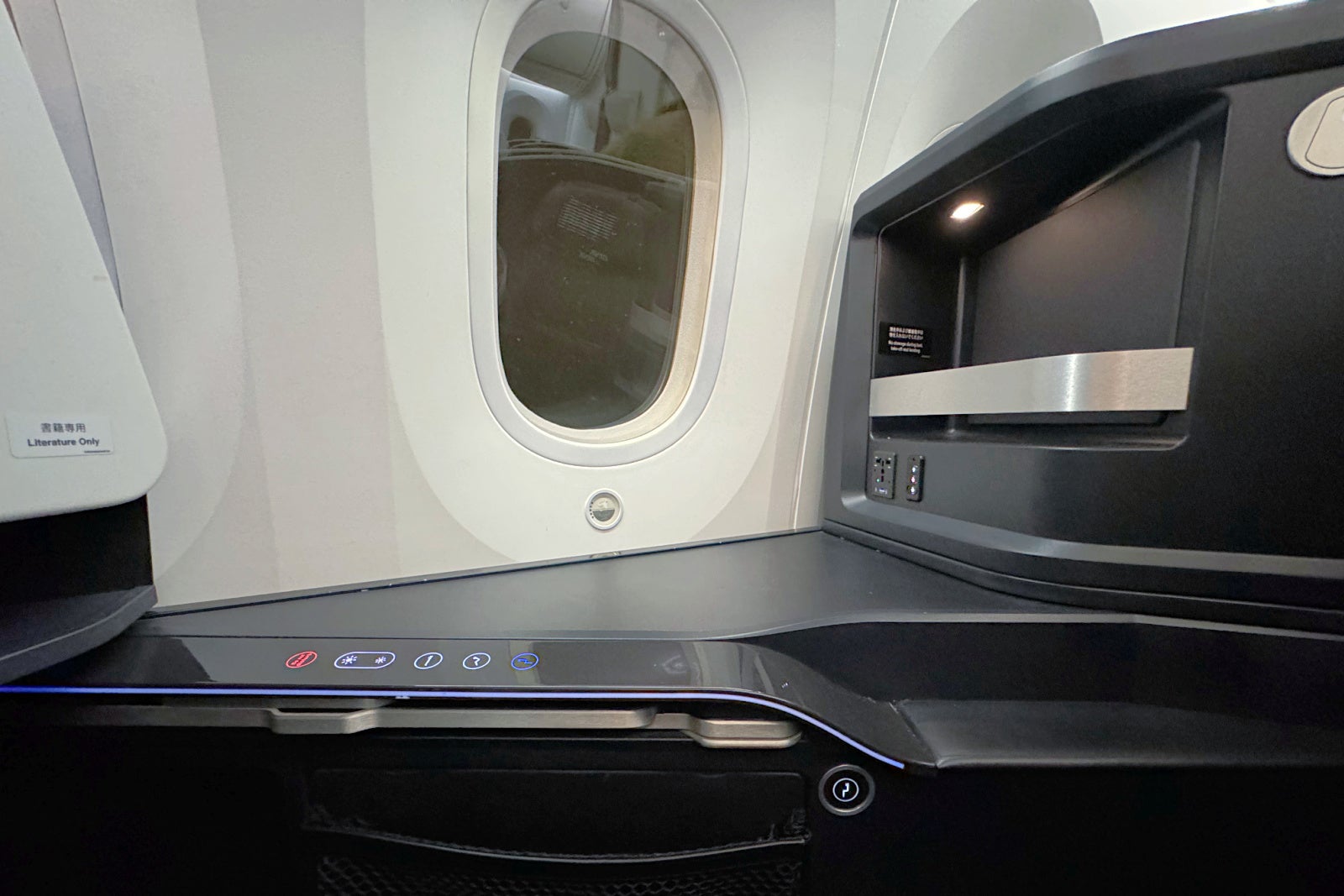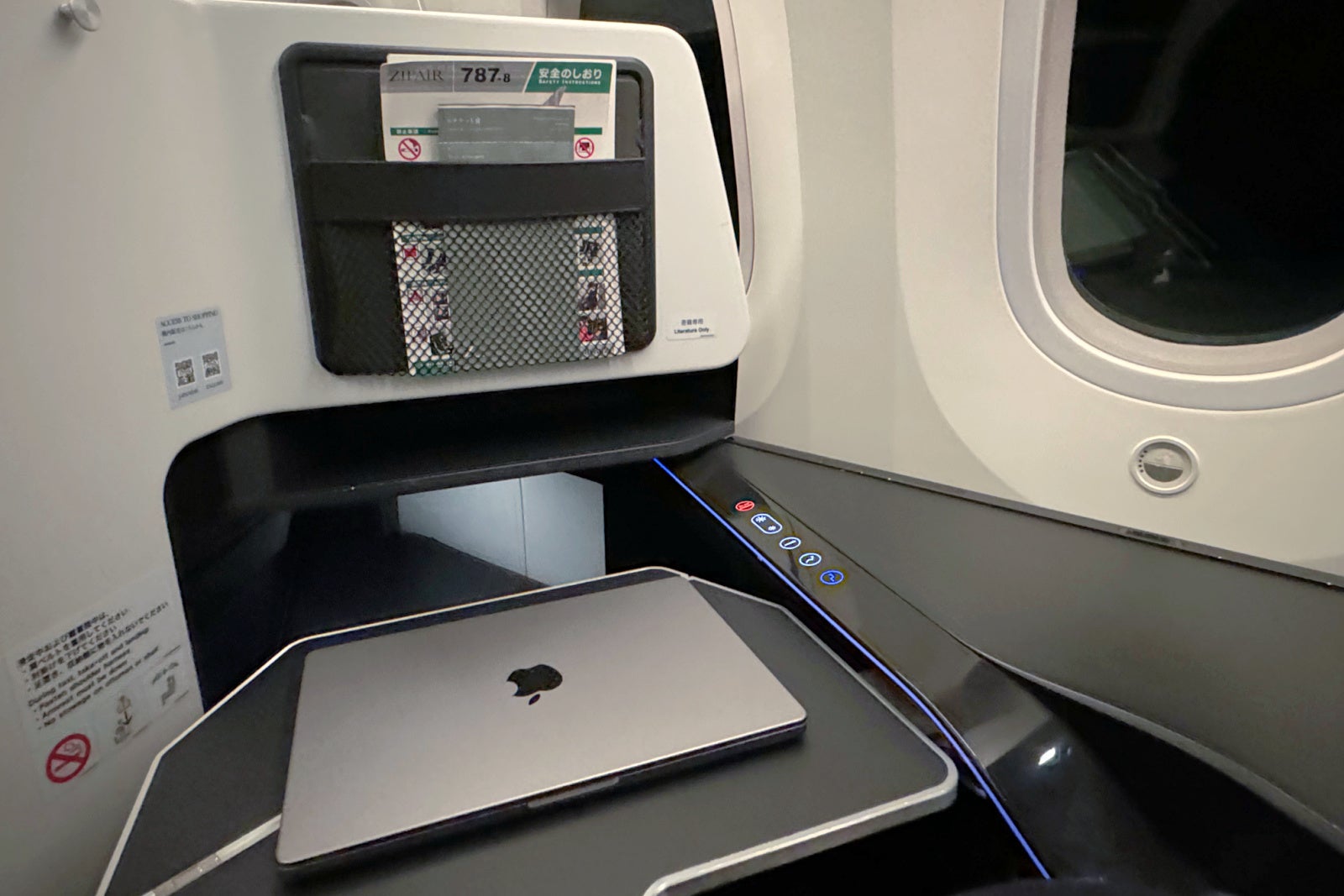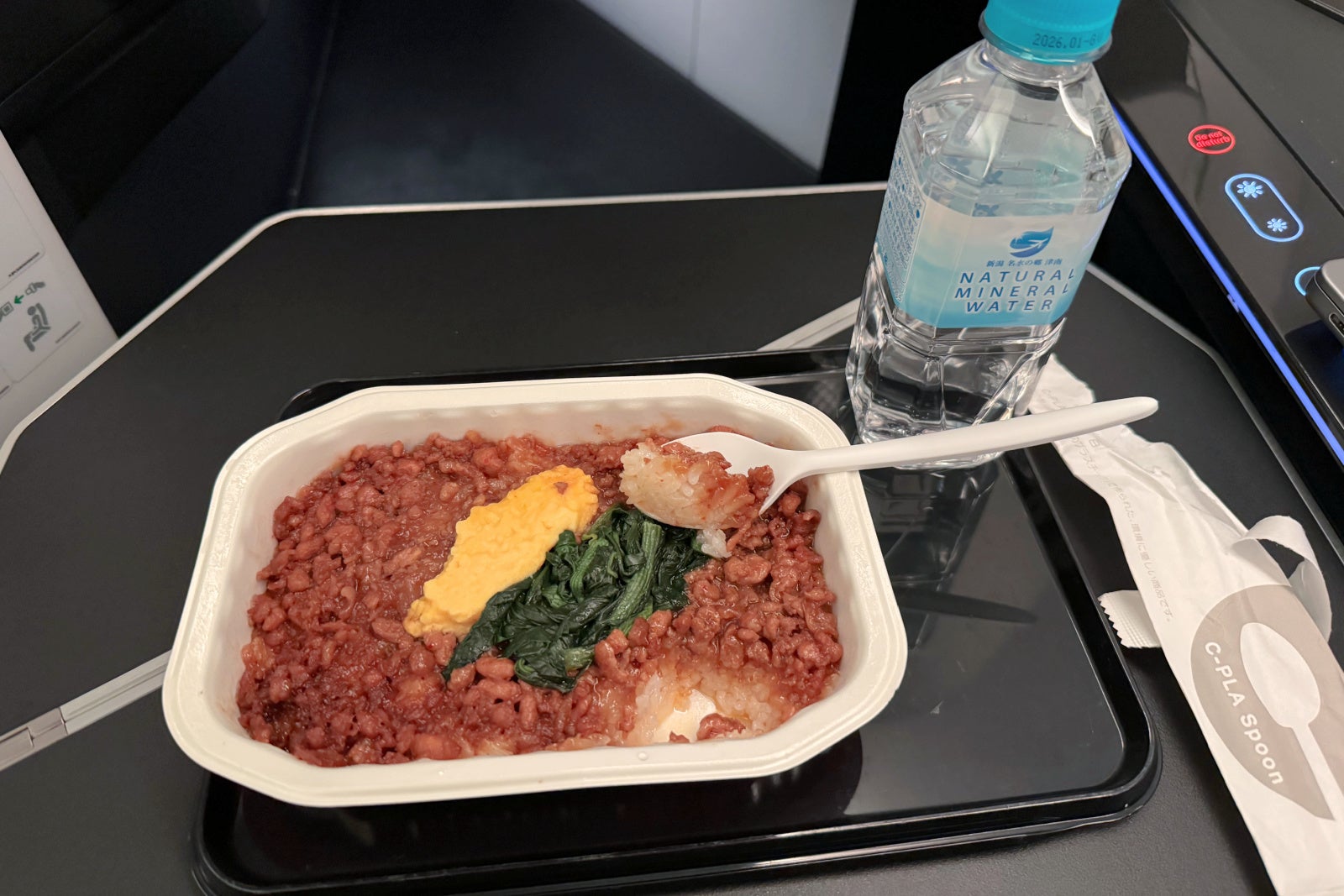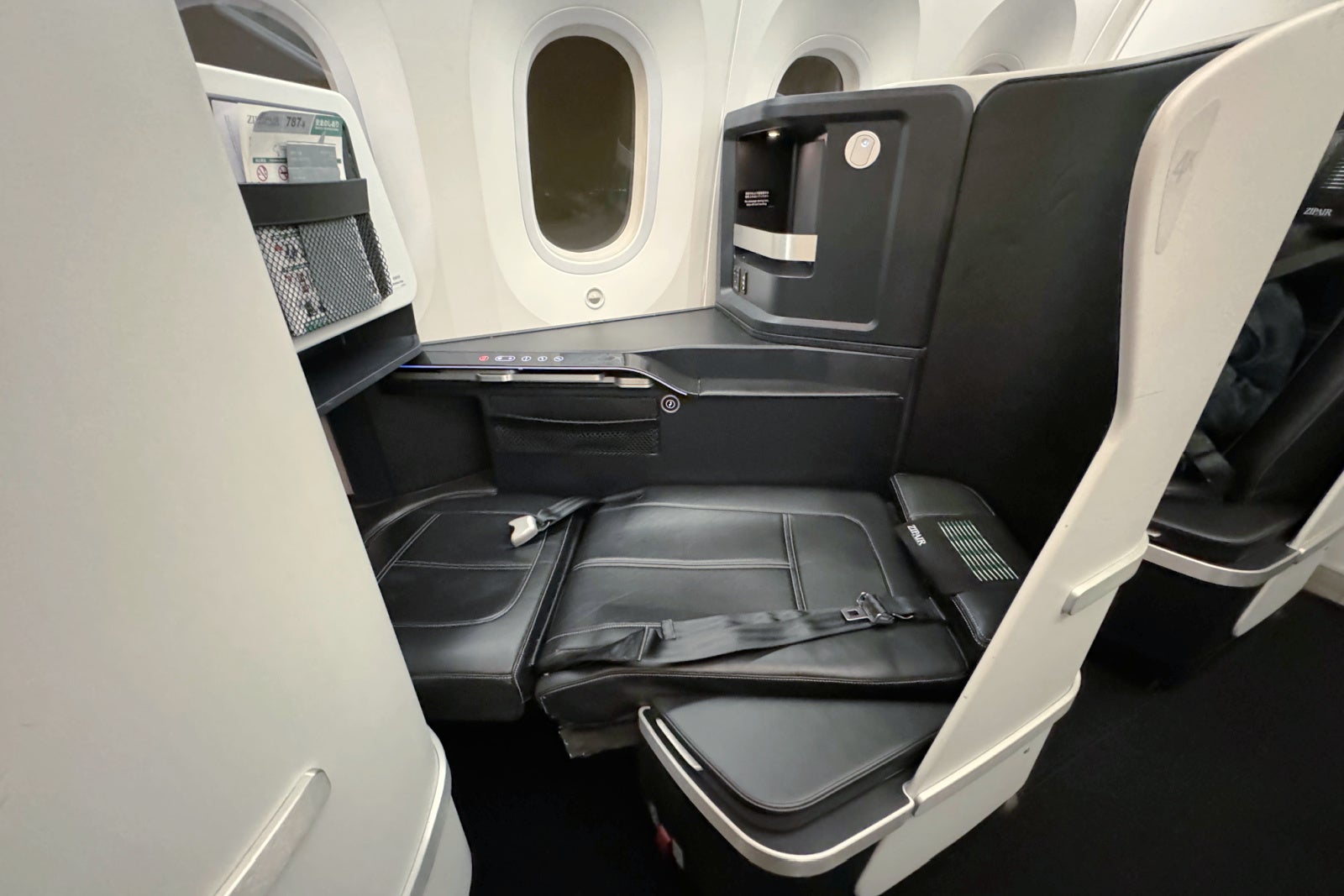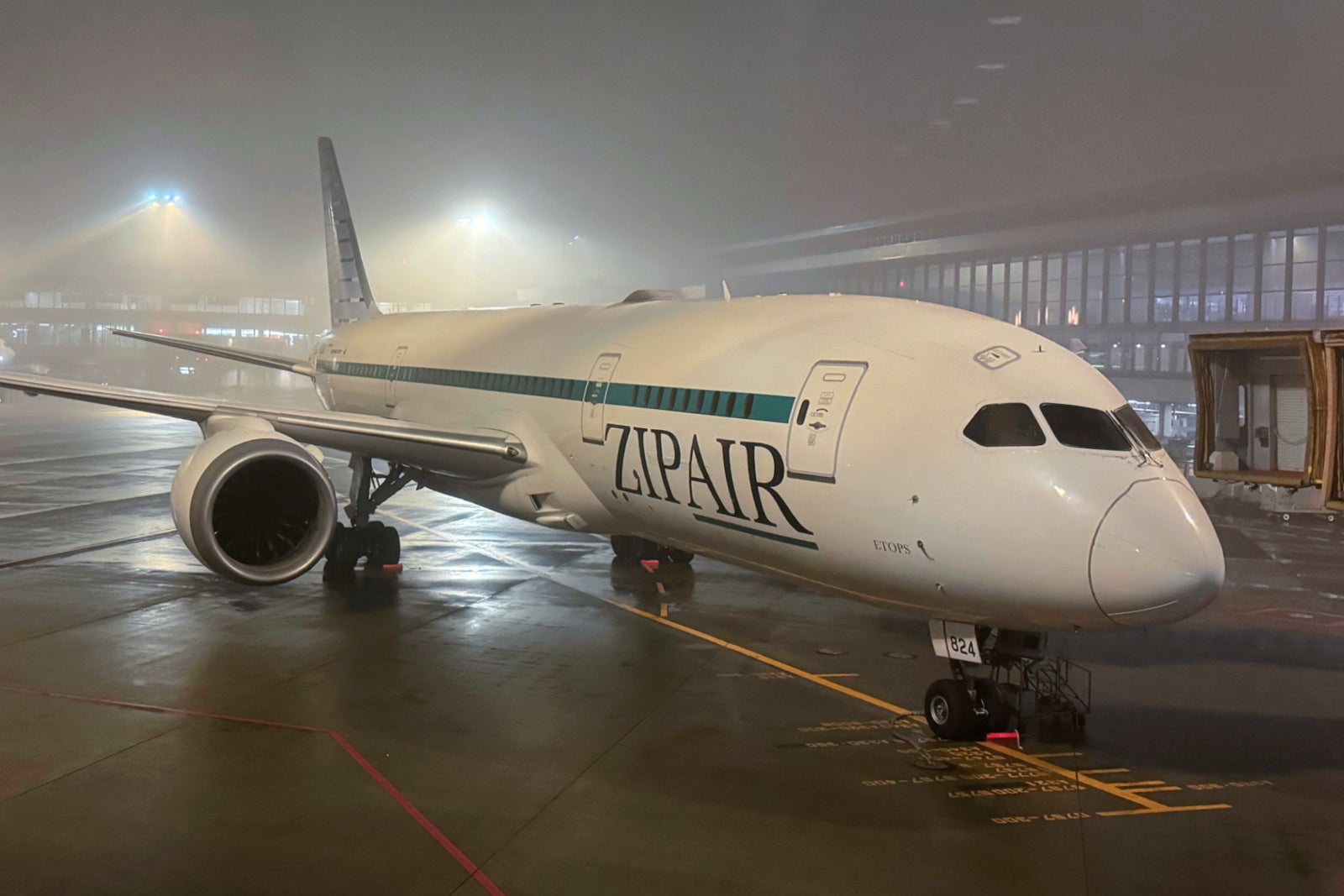Like many travelers prevented from visiting during years of coronavirus pandemic-related closures, I had been watching and waiting for a chance to travel to Japan. At long last, my family took the plunge and planned a weeklong trip to Tokyo last month.
We scheduled our vacation for my children’s spring break — peak cherry blossom season in Japan. What was fortunate timing for trip activities, however, was unfortunate timing when it came to travel costs.
Flight prices for our preferred travel dates were incredibly high. Finding award availability for my family of four was similarly impossible, at least without accepting a mileage premium I wasn’t willing to pay.
With limited options, we quickly settled on a budget airline alternative to the legacy carriers that operate most routes between the U.S. and Japan, the ultra-low-cost carrier Zipair. The airline flies from our home base at San Francisco International Airport (SFO) to Tokyo’s Narita International Airport (NRT), and its fares are well below other airlines offering this service.
In fact, the affordability of Zipair’s fares led me to purchase tickets in economy one-way and in the airline’s no-frills (but still lie-flat seats) version of business class on the return.
So, was this budget-friendly airline a hit or a bust — and was it worth paying a premium to snag lie-flat seats? Read on to find out.
What is Zipair?
Zipair is a low-cost subsidiary of Japan Airlines that is based in Tokyo. It was founded in 2018 but didn’t start flying until 2020. It operates nonstop routes from Tokyo to four destinations in Asia, as well as to five destinations in the U.S. and Canada.
U.S. airports with service to and from NRT include SFO, San Jose Mineta International Airport (SJC), Los Angeles International Airport (LAX) and Honolulu’s Daniel K. Inouye International Airport (HNL). The airline currently flies a single daily flight in each direction between NRT and both SFO and LAX (though the SFO service appears to be paused between May 16 and June 17 before resuming). Service to and from HNL and SJC is not daily, but each route is operated multiple times per week.
Zipair’s fleet is exclusively composed of Boeing 787-8 Dreamliners, aboard which there are two classes of service: an economy “Standard” class and “Zip Full-Flat.” Economy seats are all the same, with the exception of bulkhead and exit rows, and each has 31 inches of pitch. Zip Full-Flat is a separate cabin akin to business class with 18 lie-flat seats.

Daily Newsletter
Reward your inbox with the TPG Daily newsletter
Join over 700,000 readers for breaking news, in-depth guides and exclusive deals from TPG’s experts
As with all low-cost carriers, travelers can expect cheap base fares, a lack of refunds or flight credits for passenger-requested cancellations and upsells for a lot of amenities and services that legacy carriers might offer standard.
How much do Zipair flights cost?
Prices for round-trip flights can be an absolute steal for travelers who are flexible and travel light. Flights on the San Francisco-Tokyo and Los Angeles-Tokyo routes currently start at $357 one-way in economy and just $630 round-trip. The San Jose route is as low as $337 each way and a mere $501 round-trip. Hawaii-based travelers can make the trip to Tokyo for as low as $262 one-way and $570 round-trip.
Even peak periods are extremely price-competitive. The most expensive economy one-way I can currently find on any date between the U.S. and Tokyo is about $1,100, with most base one-way fares falling in the $400 to $600 range.
Zip Full-Flat seats on these routes are usually priced between three or four times economy-class prices, amounting to about $1,100 to $1,800 each way.
Zipair doesn’t have a traditional loyalty program where passengers earn miles for flying. It does, however, offer a method for travelers to redeem points for travel. Passengers can transfer miles from the Japan Airlines Mileage Bank program into Zipair points at a rate of 1 JAL mile to 1 to 1.5 Zipair points (depending on the quantity transferred). Points can then be redeemed for Zipair airfare or extras like inflight purchases, with 1 Zipair point worth 1 Japanese yen (currently about 0.65 cents).
Booking flights on Zipair
One potential friction point for travelers who like to plan international vacations in advance is that Zipair doesn’t release its flight schedule particularly early. Like Southwest Airlines, the airline releases dates a few times a year. In my experience, the lead time can be as little as four months to as long as eight to nine months in advance.
When I started getting serious about booking flights in early November 2023, Zipair only had flights on sale through March 31, 2024. We were planning to depart in March but return in April, so that put our family in booking limbo. While we waited to see what the schedule and pricing were going to be, we were afraid we might miss out on round-trip deals on other carriers.
We nevertheless chose to wait it out, with the hope that we could snag Zip Full-Flat seats on the return (Zip Full-Flat seats had sold out on the outbound long before we started looking).
Zipair does not let travelers know when its schedule is going to be released more than about a day or two before it happens. That meant I refreshed the airline’s website almost daily for several weeks to watch for our travel dates to open up.
This process was time-consuming and also ultimately proved futile, as I missed the schedule release by about 24 hours. When I noticed our flight date was available and went to book, all the Zip Full-Flat seats except one had already been sold on the return flight we wanted.
The flights were still an excellent deal, so we forged ahead. I booked all four of us in economy on the outbound.
My husband (earning bonus points toward a husband-of-the-year award) urged me to grab the single lie-flat seat still available on the return. I put the mom guilt aside and snagged the premium cabin seat for myself, booking him in economy with the kids. Sorry, honey!
The booking process via Zipair’s website was ultimately fairly simple and straightforward. I recommend reading the airline’s full FAQ page in advance, however, as it lays out all the add-ons and pricing in a more understandable way. In the booking process, some of the extras aren’t presented simultaneously, making a comparison more difficult.
The FAQ page also explains some of the more unique quirks and rules of the airline, including that passengers ages 7 and under are not permitted in the Zip Full-Flat cabin. Kids under age 6 are, however, entitled to discounted fares in economy.
All fares on Zipair include a small carry-on or personal item that weighs up to 7 kilograms (a little over 15 pounds). Everything else is extra, including all food and drinks, seat assignments, larger carry-on bags, checked bags and amenity kits — yes, even in the Zip Full-Flat cabin.
Passengers can select bundles that include several amenities or pay a la carte for one or more extras. We booked the least-expensive “Value” bundle, which includes a seat assignment, an inflight meal and a single checked bag weighing up to 30 kilograms (about 66 points), on both the outbound and the return. The cost for this bundle was an additional $85 per person each way. While it’s odd for passengers to need to pay for amenities like a meal or a checked bag when traveling in business class, the airline charges the very same fees for the bundle for Zip Full-Flat seats.
Had we booked a la carte, seat assignments were $32 each, checked bags were $54 and meals were $8 to $12, so we came out ahead.
I was able to select meals during the booking process from a menu of several different choices (the child’s meal and premium meal selections were not available as part of the Value bundle).
All in with these extras, my economy-class ticket totaled $601, and my return in the Zip Full-Flat cabin was $1,449. Had I booked the cheapest round-trip economy seats on United for those same dates, the fare would have been more than $2,000 — essentially the same price.
Checking in for a Zipair flight
A few days before our trip, I was surprised to discover there was no way to check in online for many of Zipair’s flights. The airline is rolling out online check-in on an airport-by-airport basis, and it hasn’t come to SFO yet.
On our travel day, that meant we needed to complete the check-in process in person at the ticket counter. This was something I hadn’t done in years, and I will admit it felt a little unsettling.
We arrived at SFO about 2 1/2 hours before our 4:50 p.m. flight in order to have ample time for the process.
The line for Zipair at the international terminal was a little long but moved quickly, likely because most passengers had already prepaid for checked and carry-on bags.
The agent weighed and tagged our prepaid checked bags first. She then had us place our carry-on backpacks one by one on the scale, checking to make sure they complied with the airline’s 7-kilogram limit. The agent placed small stickers around the handle of each item to signal that it had passed the weight check. Because we planned to pick up food and fill up water bottles post-security, I was relieved to see that extra weight wouldn’t count against us.
My family used Clear and TSA PreCheck to breeze through SFO’s security. With a lot of time to spare, we headed to one of SFO’s lounges that accept Priority Pass for about an hour.
Boarding was scheduled to start only 30 minutes before takeoff and started right on time. It was initially a little chaotic with hard-to-hear announcements and small signage, but it proved speedy.
Economy-class experience aboard Zipair
Once on board, the economy cabin looked like what I expected: a Dreamliner that was only a few years old but still fresh and new in appearance. The economy seats were arranged in a standard 3-3-3 configuration.
We made a beeline to our seats in row 29 — three on the right side of the plane and one directly across the aisle in the center section. Since we had not paid for carry-on bags, I thought we might be instructed to put our personal items under our seats, but the Dreamliner’s spacious overhead bins were nearly empty. All passengers could store whatever they wished in any location, even on a completely full flight.
The economy seats were a slimline design but highly functional. Legroom felt surprisingly ample for the aircraft’s standard economy-class seat pitch of 31 inches, as there were no under-seat impediments at all since the seats did not have entertainment screens.
Each seat had an adjustable headrest, a bifold tray table and a full-size seatback pocket. Just below the tray table was a USB-A port and a power outlet that would fit multiple standard plug shapes.
Additionally, each seat had a small tray that could fold down to hold small items above the regular tray table. This tray was perfectly positioned for propping up a smartphone to watch movies.
There are no entertainment screens in the economy-class cabin. Instead, passengers can stream movies from the airline’s entertainment library to their personal devices. I spotted about a dozen fairly new-release movies available, including a couple that were age-appropriate for kids. The airline also offers free Wi-Fi, but we found it fairly finicky on the outbound flight.
Flight attendants began the meal service about an hour and 15 minutes into the flight. Looking around the cabin, it seemed like at least half of our fellow passengers hadn’t ordered a meal, so the distribution went quickly.
I had preordered a variety of dishes so my family members could swap them around to accommodate picky palates. We tried out the grilled chicken with lemon-garlic cream sauce, the Hayashi beef with turmeric rice and a dish of meatballs and tomato sauce. A small bottle of water came with each meal as well. The meals were all a little dry and not particularly flavorful, but they were adequate for us.
There are additional food and drink items for purchase on board, but you’ll need to have a smartphone to order anything extra. Passengers scan QR codes on each seatback to view the options and then must check out with a credit card on Zipair’s site.
Because we ate the inflight meals and I had packed additional food, we didn’t order anything extra except a couple of bottles of water (at a very reasonable 250 yen each — less than $2). We were sorely tempted by some of the snack options, though, which included banana-flavored Kit Kats and instant noodles, plus Japanese wine and beer.
Personal care items like neck pillows, blankets, headphones and phone cables were available for purchase as well.
Flight attendants were quite speedy in delivering items as soon as passengers placed an order but were otherwise nearly absent from the cabin for most of the flight.
Everyone we interacted with at every point in the journey was fluent in both Japanese and English. All written materials were in both languages, so the entire experience was easy to navigate as an English speaker.
The flight landed in Tokyo at 8 p.m. the next day. Deplaning 11 hours later was a blur after getting only a few hours of sleep during the flight, but we cleared immigration, collected checked bags and hopped in an airport shuttle less than 45 minutes after touchdown.
Flying in Zipair’s Zip Full-Flat seat
After spending a memorable week in Tokyo, we headed back to NRT for our return trip home. Our flight was scheduled for 9:35 p.m. on a Saturday evening, arriving at 2:55 p.m. (earlier) the same day at SFO. NRT’s Terminal 1 felt like a ghost town when we arrived about three hours in advance of our flight.
Zipair’s in-person check-in process was even speedier in Tokyo than it was in SFO. In Tokyo, passengers prescan their own passports at dedicated kiosks and receive boarding passes before getting in line to drop bags. Again, the Zipair agent weighed and tagged our carry-ons before security.
We breezed through security in less than two minutes and spent the rest of the time before boarding at a nearby Priority Pass lounge.
When boarding started, Zip Full-Flat passengers were called for priority boarding, so I parted ways with my family.
The Zip Full-Flat cabin is in a 1-2-1 reverse-herringbone configuration with just 18 seats — five rows of single seats running along the sides of the cabin and four rows of two seats running down the center.
The middle seats are angled toward one another so that passengers traveling together can see each other a bit, but there’s also a panel in the middle that can be pulled across for privacy.
I was in seat 4K, which I thought was one of the best seats for a solo traveler. I didn’t have a neighbor and was far enough from potential galley and bathroom commotion. The only seats that may have been better were 3A and 3K, as they also have two windows due to the spacing of the seats in the cabin.
The seats themselves are functional but about as basic as it gets for a lie-flat business-class cabin. The seats are 20 inches wide, with 42 inches of pitch converting into a 76-inch bed when fully reclined — fairly comparable to many business-class seats on full-service carriers, though perhaps a little tight for taller travelers.
There is very little floor storage space (only enough for a purse) under the footrest. I stowed my backpack in the overhead bin for takeoff and then took out the larger items I needed later in the flight.
At shoulder level, there was a small shelf that I used to store a water bottle in flight. The seat was equipped with the same near-universal outlet and USB-A port that economy seats had.
Like economy class, there was not a screen to be seen anywhere in the cabin. Unlike economy class, there was no obvious place to prop up a phone to stream entertainment.
However, the seat was much better equipped for tablet or laptop usage, with a large tray table that swung out and unfolded diagonally. I was also able to keep my laptop out on the counter to the side of my seat even when I wasn’t using the tray table.
The return flight was 90 minutes shorter than the outbound (9 1/2 hours versus 11 hours), so I had less time to enjoy the comfort of the larger seat. Nevertheless, I thought it was still more valuable to have the lie-flat seat in the eastbound direction since Zipair’s NRT-to-SFO flight departs late in the evening and arrives the same afternoon.
The free Wi-Fi worked better on the return, and I was able to use my laptop and get work done when I wasn’t sleeping.
The food on the return was better as well (and better than most premium cabin meals I’ve had on U.S. carriers), likely because we originated at the airline’s home base with a larger catering operation. I ate the spicy chicken bowl with rice. It didn’t look particularly appetizing, but it was quite tasty and fairly authentic, with Japanese sticky rice, a scrambled egg on top and a flavor kick to the meat. The meal was good enough that my husband later mentioned to me how much he also enjoyed the same dish back in coach. As we had paid for the privilege, it was nice that one of our two meal purchases was so satisfying.
As with my experience in coach, the flight attendants were largely absent except during taxi, preparation for landing and meal distribution.
What the Full-Flat seat did best was facilitate sleep, and that’s what I did for more than half the flight, albeit in pretty spartan style. I traveled with my own small pillow and used a hoodie as a blanket. Many of my fellow Full-Flat passengers purchased the amenity set for 2,500 yen ($16) that included a neck pillow, a blanket, earplugs, an eye mask and slippers.
I got a very reasonable and comfortable five-plus hours of uninterrupted sleep, though, and woke only a few hours before we landed at SFO.
The bottom line: Was Zipair worth it?
The Zipair flight experience was certainly no-frills, but minimal creature comforts aboard a fairly new aircraft makes a more than tolerable experience. The key was doing the research to know what to expect and preparing accordingly as we did. Everyone in my family agreed they would happily fly the airline again. For the price we paid, the airline delivered a substantial value during a peak travel time to Japan.
The prices of Zipair’s extras also are quite reasonable, so it’s possible to pay for a few of them for additional comfort and still come out way ahead on price compared to other carriers.
Would we pay for Zip Full-Flat seats for some or all of us again? While the cabin is far from a business- or first-class experience, there’s no question we would if the price is right (and if they were still available for purchase given the demand). This is particularly the case on a return from Tokyo to the West Coast that leaves at bedtime when passengers are more likely to sleep. Even though the Zip Full-Flat cabin lacks all the niceties that travelers might expect in international business class, getting a lie-flat seat is often what really matters most.
That said, I would at least think twice before paying Zipair’s highest current prices for a lie-flat seat. Still, I’d certainly pay $1,100 to $1,500 each way, particularly if economy seat prices on other airlines were over $2,000 round-trip as they were when we traveled.
For many travelers (myself included), extra space on a plane is more important than lavish service or a fancy meal, so I got what I paid for in Zip Full-Flat. Passengers who prefer a more luxurious travel experience could potentially be disappointed but likely only if they didn’t come into the experience understanding how Zipair’s product is unique.

